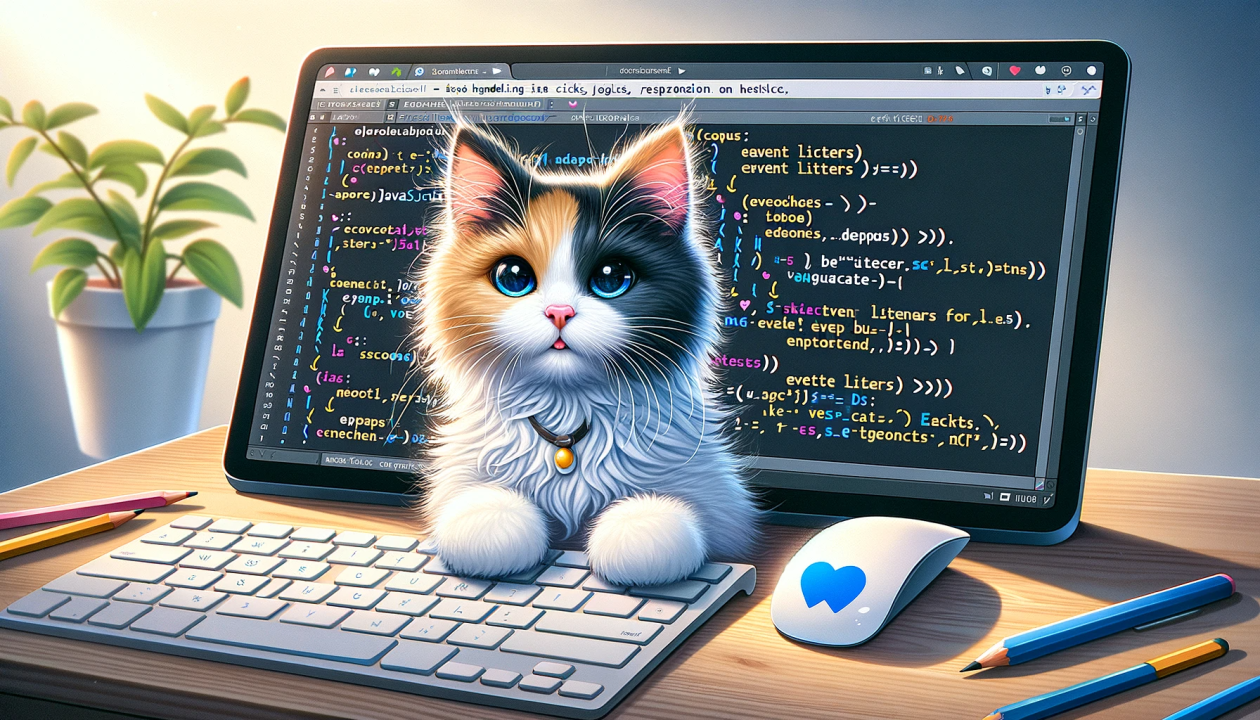JavaScript is a powerful language for enhancing user interactions on web pages. Two fundamental concepts that enable dynamic and responsive web applications are event handling and DOM manipulation. In this blog post, we will explore how to manage events and modify the Document Object Model (DOM) to create interactive web experiences.
1. Understanding the DOM
The Document Object Model (DOM) represents the structure of a web page as a tree of objects, where each node corresponds to an element or attribute. Manipulating the DOM allows you to dynamically change the content and structure of your web pages.
Accessing DOM Elements
To work with DOM elements, you first need to select them using various methods provided by JavaScript.
javascript
// Selecting elements by ID
const elementById = document.getElementById('myElement');const elementsByClass = document.getElementsByClassName(‘myClass’);
const elementsByTag = document.getElementsByTagName(‘div’);
const elementByQuery = document.querySelector(‘.myClass’);
const allElementsByQuery = document.querySelectorAll(‘div.myClass’);
2. Manipulating the DOM

Once you have selected DOM elements, you can modify their properties, content, and styles.
Changing Content
javascript
// Changing text content
const myElement = document.getElementById('myElement');
myElement.textContent = 'New Text Content';myElement.innerHTML = ‘<strong>Bold Content</strong>’;
Modifying Attributes
javascript
const link = document.querySelector('a');
link.setAttribute('href', 'https://www.example.com');
link.removeAttribute('href');
Updating Styles
javascript
const box = document.getElementById('box');
box.style.backgroundColor = 'blue';
box.style.width = '200px';
Creating and Inserting Elements
javascript
// Creating a new element
const newDiv = document.createElement('div');
newDiv.textContent = 'I am a new div';document.body.appendChild(newDiv);
const existingElement = document.getElementById(‘existing’);
document.body.insertBefore(newDiv, existingElement);
3. Event Handling
Events are actions that occur in the browser, such as clicks, key presses, or mouse movements. Handling these events allows you to execute JavaScript code in response to user interactions.
Adding Event Listeners
javascript
// Adding a click event listener
const button = document.getElementById('myButton');
button.addEventListener('click', function() {
alert('Button clicked!');
});button.addEventListener(‘click’, () => {
console.log(‘Button was clicked!’);
});
Event Object
The event object contains information about the event and provides methods to interact with it.
javascript
button.addEventListener('click', function(event) {
console.log('Event type:', event.type);
console.log('Clicked element:', event.target);
});
Removing Event Listeners
javascript
function handleClick() {
console.log('Button clicked!');
}button.removeEventListener(‘click’, handleClick);
4. Common Event Types
- Click: Triggered when an element is clicked.
- Mouseover: Triggered when the mouse pointer moves over an element.
- Keydown: Triggered when a key is pressed down.
- Submit: Triggered when a form is submitted.
5. Event Delegation
Event delegation involves adding a single event listener to a parent element to manage events for its child elements. This approach is efficient and simplifies event management.
javascript
document.getElementById('parentElement').addEventListener('click', function(event) {
if (event.target && event.target.matches('button.childButton')) {
console.log('Child button clicked!');
}
});
6. Conclusion
Mastering event handling and DOM manipulation is essential for creating interactive and dynamic web applications. By effectively managing events and modifying the DOM, you can build responsive user interfaces and enhance the overall user experience.
Explore these concepts further and experiment with different event types and DOM methods to fully leverage JavaScript’s capabilities. For additional resources, check out the MDN Web Docs on DOM and JavaScript Events to deepen your understanding.











